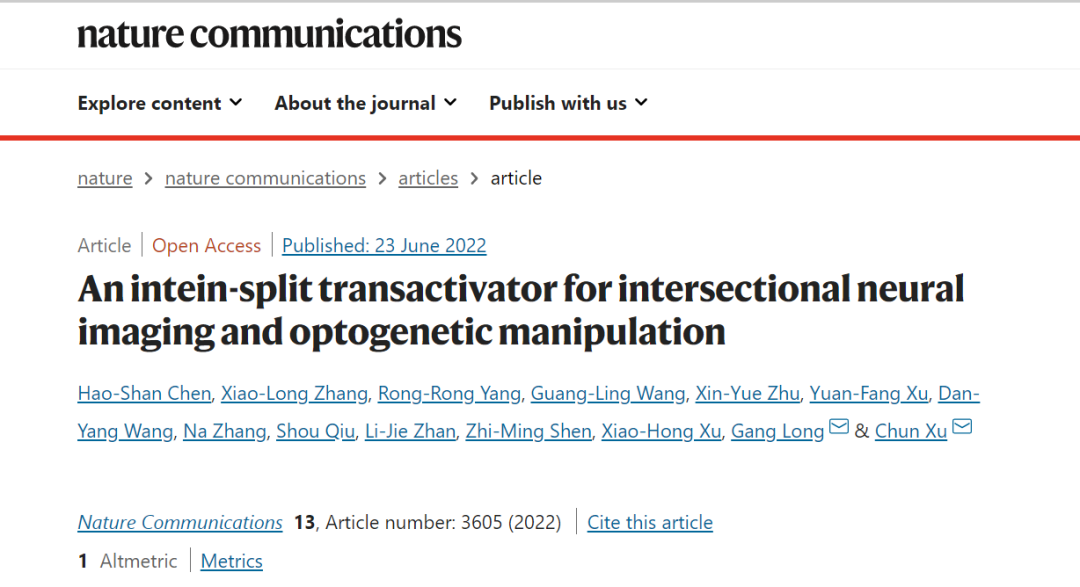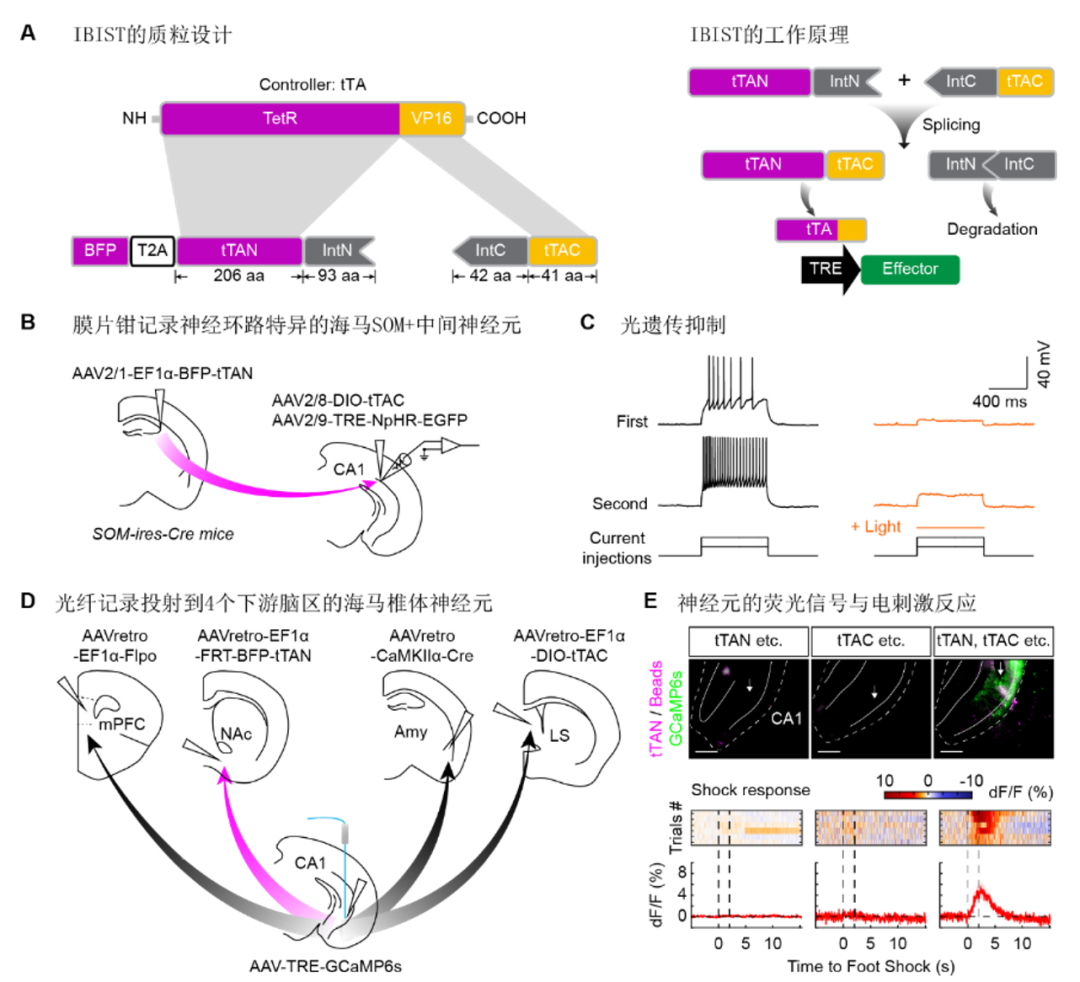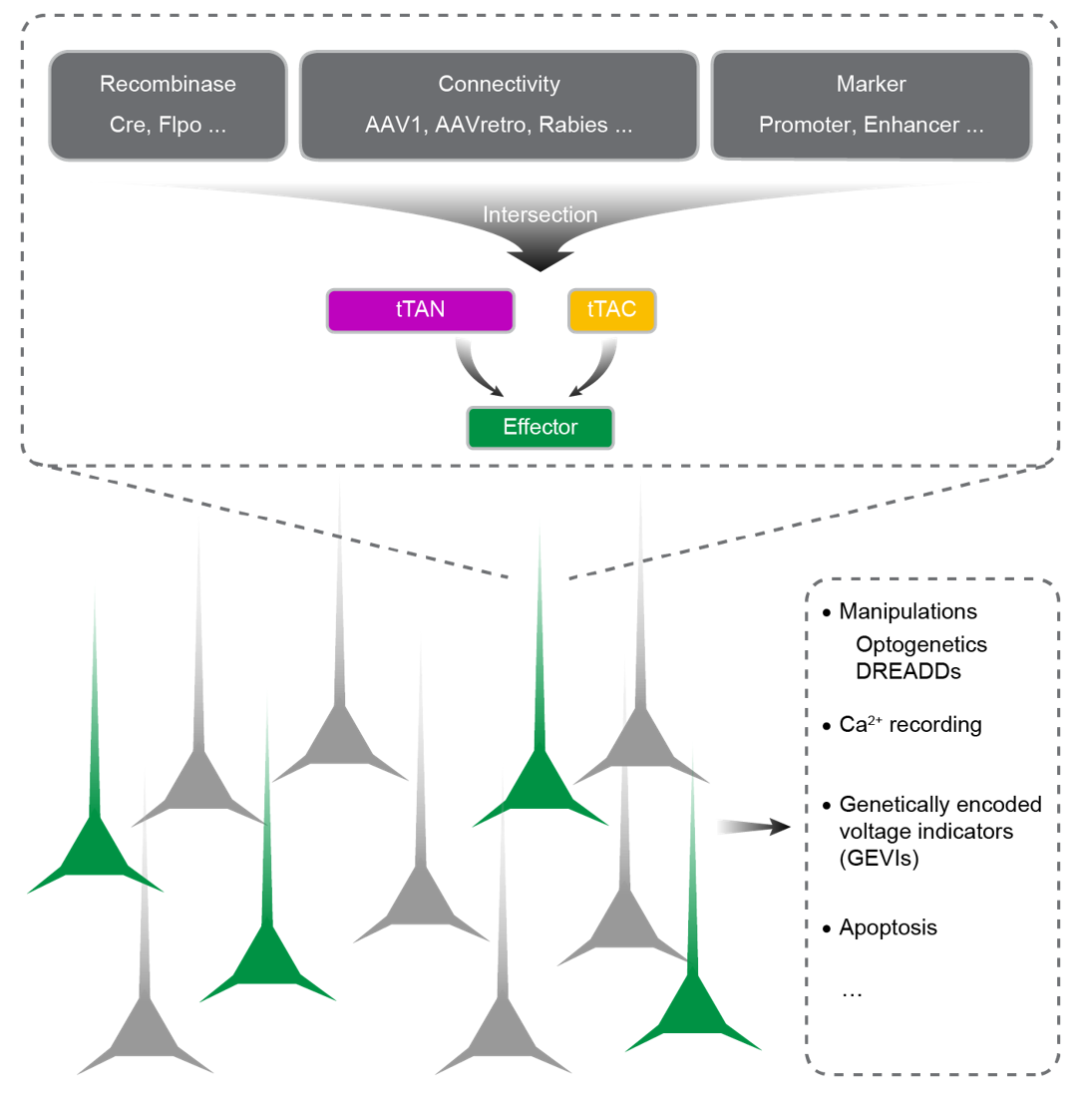Scientific research progress | "Nature-Communication" published the research results of the Xu Chun research team on the new type of neurons in the Du Symnarians
Author:The Chinese Academy of Science Time:2022.06.24
"Nature Communications"
On June 23, 2022, the Journal of Nature-Communication published online the research paper entitled "An Intein-Split Transactivator for In terms of Neural Imaging and Optogenetic Manipulation". The Institute of Neuroscience), the National Key Laboratory of Neurosciences, Xu Chun Research Group of the Shanghai Brain Science and Brain Studies Center, and the Shanghai Bastel Research Institute of the Chinese Academy of Sciences. The research and development of new molecular tools for multi -characteristic neurons marks, records and control, revealing the corresponding relationship between the projection mode and emotional coding of the abdominal hippocampus neuron, which provides more refined the structure and functions of the complex neurotransomed circuit. And widely applicable tool set.

Q ·
How to improve the effectiveness and number of labeling features of cross -mark tools?
The brain neurons have complex and diverse cell types. The precise definition of cell types has a key role in analyzing the connection of the brain neural circation and function, and will eventually help us better understand the working principle of the nervous system. The precise definition of nerve cell types often depends on multi -conditioned cross -mark technology. However, the existing tools are complicated and tedious. The characteristics of their labels are not only limited, but also often faces the problem of unable to effectively express the problem of light genetic and calcium imaging related molecules. Therefore, how to improve the effectiveness of the cross -marked tools and the number of marking features is still a problem in the field.
To solve this problem, the study uses the internal peptide -based protein bonding technology to successfully realize the assembly of the protein level in the nerve cells. This assembly not only has the characteristics of multi -condition crossing, but also can effectively drive the expression of a series of effect genes, thereby achieving specific markers and functional studies of multi -characteristic neurons (Figure 1A). Researchers call the tool iBist (Intein-Based In terms of Synthesis of Transactivator). After verifying the specificity and effectiveness of the iBist tool, the research team successfully displayed a variety of instance research in the mouse Hema brain region and the macaques. Researchers combined with a variety of characteristics such as neurotrait connection and neuron molecular labels, expressed optical genetic proteins in the specific cell groups of the mouse and Hema brain region, and realized photocardiac control (Figure 1b and C). In addition, the study successfully used five features to accurately define the multi -target surplus neurons in the hippocampus, and carried out calcium imaging records (Figure 1d and E).

Figure 1. Development and application of IBIST tools. (A) Principles of plasmid design and work of IBIST tools. (B) Use the IBIST tool to mark the SOM+intermediate neurons of the abdominal hippocampus CA1 entered on the back of the hippocampus to express the optical genetic protein NPHR. (C) Huang Guang controls the electrical motion of neurons in the middle of the SOM. (D) Use the IBIST tools to express the calcium indicator protein GCAMP6s in the hippocampus excitement neurons (CAMKIIHα mark) projected into the four downstream brain areas. (E) The fluorescent signal and calcium reaction of the hippocampus neurons.
The work has developed new molecular tools, based on a variety of characteristic target targets such as molecular label and ring road connection, and has calcium imaging records and optical generic controls on these multi -characteristic nerve cells. Compared with the previous methods, the molecular tool can achieve a more detailed and complex multi -characteristic mark, more efficiently to drive the expression of the effect gene, simple and direct design plasmid and experimental solutions, and more widely adapted to existing commonly used tools. Virus and mouse products (Figure 2). This study not only provides weapons for the structure and functional study of the neural ring circuit, but also further reveals the diversity law of hippocampus cells for emotional information.

Figure 2. Strategy and prospects based on multi -characteristic marking specific cell types.
Researcher Xu Chun at the Chinese Academy of Sciences Brainwitzo Center, and researcher of the Shanghai Bastend Institute Long Gang, a joint communication author of the paper. Chen Haoshan, a doctoral student of the Mind Intelligence Center, and Zhang Xiaolong, a doctoral student of the Institute of Bastel Institute, Zhang Xiaolong, the first author of the thesis. Wang Guangling, Yang Rongrong, and Dr. Qiu Jun, assistant researchers at the Laboratory Laboratory of Brainwitzer, also made important contributions to topics. Professor Zhang Xiaohui of Beijing Normal University and Researcher He Miao from Fudan University gave valuable suggestions on the amendments to the paper. The study was helped by researcher Xu Xiaohong and his research team, and his research group, as well as the help of Shen Zhiming and his team of the entire brain's neural connection map platform. The study was funded by Shanghai, the Ministry of Science and Technology, the Chinese Academy of Sciences, the Fund Commission and the Hong Kong Laboratory.
- END -
"Decrease in the convenience" to speed up!Changsha's 8 types of judicial certification can be opened online

Recently, the news of the eight types of judicial certificates can be discussed in...
This year's Q1 domestic mobile phone shipments accounted for the top list of the top of Yi Lord Glory, the growth rate of more than 200%

In fact, data on the first quarter of this year (Q1) domestic smartphone shipments...